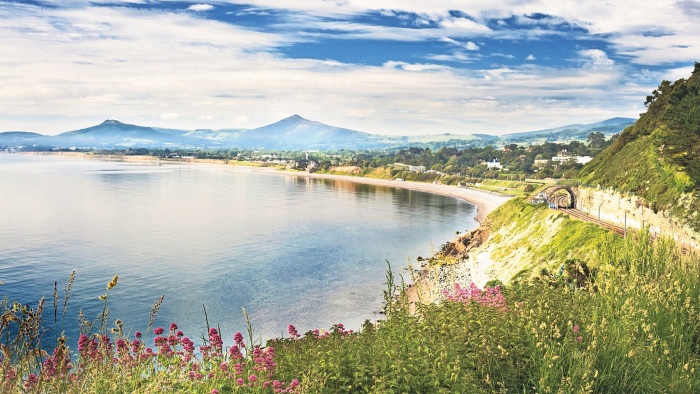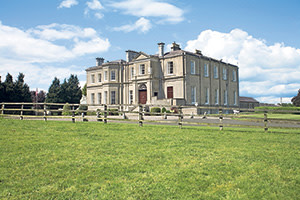Ireland property: Dublin’s rocky road to recovery

Roula Khalaf, Editor of the FT, selects her favourite stories in this weekly newsletter.
Dublin has celebrated the end of Ireland’s EU bailout with double-digit house price rises, a surge in purchases and the return of international investors. Yet doubts remain whether these are signs of a sustainable recovery or merely a bubble created by a shortage of homes on sale.
Short-term statistics make impressive reading. House prices in Dublin rose 4.1 per cent in the final quarter of 2013 taking the annual rise to 14.1 per cent, according to estate agency Sherry FitzGerald. But only 0.9 per cent of Dublin’s private housing is on sale compared with 2.5 per cent across the rest of the Irish Republic where prices are less bullish.
The country’s Property Services Regulatory Authority says that 26,917 homes were sold across the country last year – one-third of them in Dublin – compared with 24,935 in 2012.
The Irish Banking Federation says new mortgage lending in the third quarter of 2013, the latest figures available, was 42 per cent higher than the previous quarter and 15 per cent up on the previous year.
Last year house prices rose 13 per cent in Galway City and 4.5 per cent in Cork, according to Sherry FitzGerald. Investment purchases accounted for 13 per cent of all Irish residential sales last year, up from 10 per cent in 2012.
All these figures point to a strong market but the Irish capital still has a steep hill to climb.
“Prime prices declined over 60 per cent since 2007. Having risen for close to 15 years, a correction in prices was not surprising, even if the scale of the unwinding was,” says Rena O’Kelly, Knight Frank’s residential director in the city. She claims that even after a heady 12 months of increases, Dublin’s values remain little more than half their levels in 2007.

Unsurprisingly, with prices considered to be coming off the floor, agents are reporting renewed interest in traditional high-end suburbs.
These include Howth and Sandymount to the east of the city centre where sea views are good, and leafy locations to the south of the centre such as Ballsbridge and Ranelagh.
In Howth, for example, a 2,000 sq ft house with elevated views of Dublin Bay, but requiring substantial modernisation, is on sale for €1.12m with Gallagher Quigley estate agents. Near Ballsbridge, there is Victoria Lodge, a handsome Regency-style property with four bedrooms and large gardens, which is being marketed by Sherry FitzGerald for €2.95m.
However, the area with the highest value per sq ft – and where no houses are at present on the open market – is Killiney Hill on the southern edge of Dublin Bay. Residents here include musicians Bono and Enya, and former Formula One driver Eddie Irvine.
High-end buyers seeking a more rural lifestyle and who are willing to commute often choose Wicklow to the south and Kildare to the west, each under a one-hour drive from the capital. In the latter, Knight Frank is selling Courtown Demesne for €10m. The country estate has 13 bedrooms in main buildings and 386 acres of land. Features include stables, a polo court, swimming pool, helipad and hangar.
International buyers, a rare sight between 2007 and 2012, are now back in force, say agents. Asian purchasers, particularly from China, Malaysia and Singapore, are keen on Dublin because many send their children to study in the city. “Approximately 18 per cent of what we sold last year went to international buyers or expats,” says Graham Murray, head of residential for Savills in Ireland. “Many are returning home after years of living abroad to take advantage of the value. Before they left, they would have been priced out.”
Yet there are still plenty of reminders of the market’s fragility. The proportion of Irish owner-occupiers suffering serious mortgage arrears rose 12.9 per cent in the third quarter of 2013 – the latest data available – and property website Daft says that, if Dublin prices are excluded, all-Ireland house values fell six per cent in 2013.

Meanwhile, Walford House, on Dublin’s exclusive Shrewsbury Road, reportedly sold for about €14m last year, representing a 75 per cent fall from its €56m sale at the height of the market in 2007. Another trophy mansion, Gortanore, on Brighton Road in the city’s Rathgar district, last year suffered an ever bigger drop. The property, which cost €30m in 2006, was bought for just €5m by Saudi Arabia as its new embassy in the city.
The heady cocktail of a seemingly-strong market laced with reminders of the scale of the crash, has led some analysts to describe the current upswing as merely the result of a stock shortage rather than a genuine recovery. “The tale of 2013 was definitely the lack of supply in sales, rental and shared accommodation in the capital,” says Keiran Harte of Daft. “This has had a major influence in Dublin’s asking prices returning to 2007-style percentage increases. The only solution is to begin planning and building new accommodation.”
Ronan Lyons, assistant professor in economics at Trinity College, Dublin, has calculated for Daft that the shortage of housing is also behind the 11.2 per cent rises in rent seen in Dublin over the past 12 months. “With no sign of new supply coming on stream any time soon, the onus is now on the government to encourage construction,” he says.
A report in January by the Society of Chartered Surveyors Ireland shows that 55 per cent of its members report a serious stock shortage in the capital. Separately, Savills says any prospect of significant numbers of new homes being built to meet demand is being frustrated by complicated planning restrictions and a shortage of finance for developers.
The alarm over Dublin’s sharp rise in values and its insufficient supply has now led rating agency Standard & Poor to warn that current house price growth across Ireland may reduce sharply as soon as next year. In words that remind some analysts of 2007, the agency says “bank lending conditions remain tight and high mortgage arrears will maintain downward pressure on house prices”. Dublin’s housing market may look healthier today than in recent years – but it has not received the all-clear yet.
——————————————-
Buying guide
● Dublin’s annual crime rate is 789 reported offences per 10,000 people (June 2013)
● There are a large number of bank-repossessed homes on sale at the bottom of the market
● Stamp duty is low, at 1 per cent on homes worth up to €1m and 2 per cent for €1m-plus properties
● Many estate agents are casual, sharing offices with services or shops in rural areas
What you can buy for . . .
€600,000: A three-storey terraced house in central Dublin
€1.5m: A detached house in a high-end suburb like Howth
€4m: A substantial country house plus land, within 25 miles of Dublin
Comments